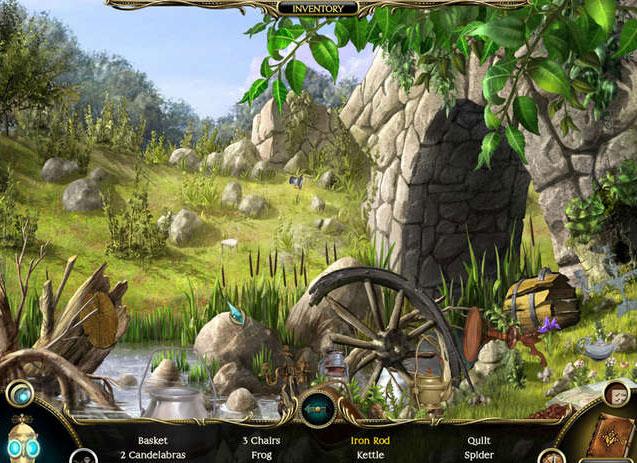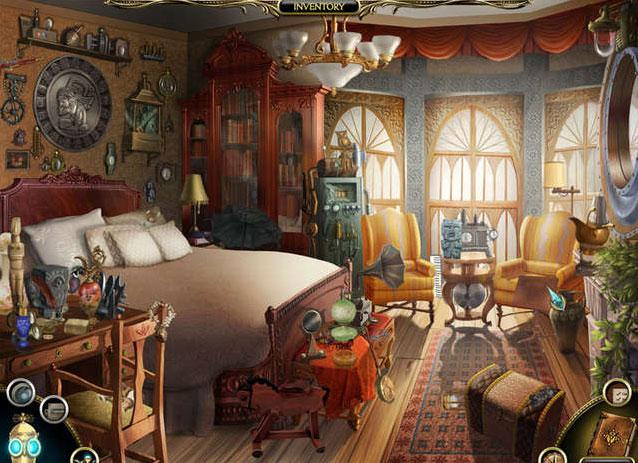- Wondering how to get Monopoly GO! free rolls? Well, you’ve come to the right place. In this guide, we provide you with a bunch of tips and tricks to get some free rolls for the hit new mobile game. We’ll …
Best Roblox Horror Games to Play Right Now – Updated Weekly
By Adele Wilson
Our Best Roblox Horror Games guide features the scariest and most creative experiences to play right now on the platform!The BEST Roblox Games of The Week – Games You Need To Play!
By Sho Roberts
Our feature shares our pick for the Best Roblox Games of the week! With our feature, we guarantee you'll find something new to play!All Grades in Type Soul – Each Race Explained
By Adele Wilson
Our All Grades in Type Soul guide lists every grade in the game for all races, including how to increase your grade quickly!
The Clockwork Man: The Hidden World Review
The Clockwork Man: The Hidden World is everything the first game should have been. It has all of the things that made The Clockwork Man enjoyable (exquisite hand-drawn graphics, unique scrollable and zoomable scenes, cool steampunk theme, fresh and challenging puzzles) but addresses the issue of the first game’s short length. Boasting six rich chapters instead of the original’s scant three, The Hidden World feels like a full-fledged game and delivers a satisfying ending.

The Clockwork Man: The Hidden World
The Clockwork Man: The Hidden World, developed by Total Eclipse Games and published by GameHouse,is everything the first game should have been. It has all of the things that made The Clockwork Man enjoyable (exquisite hand-drawn graphics, unique scrollable and zoomable scenes, cool steampunk theme, fresh and challenging puzzles) but addresses the issue of the first game’s short length. Boasting six rich chapters instead of the original’s scant three, The Hidden World feels like a full-fledged game and delivers a satisfying ending.
The story once again centers on aspiring engineer Miranda Calomy and her robot friend Sprocket. Miranda is searching for her parents, who disappeared eight years ago. Her search begins in an abandoned mine in Ireland, the last place her parents were seen alive, and takes her to several increasingly exotic and wondrous locations.

The Hidden World clearly assumes you’ve played the first Clockwork Man and dumps the player into the story a little abruptly. And to be honest, the story isn’t the game’s strongest point. No, you’ll be playing this one for the beautiful graphics, polished hidden object/adventure gameplay and ingenious puzzles.
The Hidden World is part point-and-click adventure, part hidden object game. As the cursor hovers over various objects it changes shape to indicate how you can interact with it. Some items are just lying around to be picked up and added to the inventory, while other key items must be earned by first clearing a room of hidden objects.
If you get stuck in either the hidden object or adventure portions of the game, you can take advantage of Sprocket’s handy array of hint gadgets. The most basic type of hint reveals the location of one item, while another merely shows the silhouette as a search aid. The more advanced Sonar hint reveals multiple items – but only briefly. You can also get a text clue about what to do next, which gives you a gentle nudge in the right direction.
Mini-games, which in hidden object games are so often throwaway time-wasters that just get in the way, are great fun in The Hidden World. The puzzles can’t be skipped, so you might find yourself investing 20 or 30 minutes figuring out a solution. But the puzzles are so well-designed that the journey is worth it if for nothing else than the rush of satisfaction you get from a challenge solved. The lack of a skip feature is unusual for the genre these days, but to me it shows that the developers actually have faith in the puzzles they designed as being challenging and enjoyable enough that people will want to bother with them. And in this reviewer’s opinion, they’ve succeeded.

In fact, one of the most refreshing things about The Hidden World is that it rarely comes out and tells you exactly what to do. There’s a task list that keeps you from getting hopelessly lost, but in terms of figuring out puzzle solutions, it’s up to you to piece that together by combing through Miranda’s journal for well-placed clues.
The game’s graphics, which again feature unique zoomable and scrolling scenes, are another great strength. In zoomable scenes you’ll be given one list of hidden objects to find, but those items will be spread out across two locations that you can access by “zooming” in and out.
The real graphical centerpieces of The Hidden World, though, are the gorgeous scrolling scenes: large panoramas with more than one layer, giving the illusion of a background and foreground, and thus depth. By moving the scene from side to side, you’ll even reveal objects concealed behind other scenery. Every time a scrolling scene appears in the game, you’re in for a visual treat.
My grips with The Hidden World are few. The cutscenes drag a bit because rather than clicking on a bit of dialogue to advance to the next part, you have to wait for the voice-over to finish. The story is a tad trite too, although better than most hidden object fare. In short, fans of hidden object adventures can download this one with confidence.

The good

The bad
More articles...
Monopoly GO! Free Rolls – Links For Free Dice
By Glen Fox
Wondering how to get Monopoly GO! free rolls? Well, you’ve come to the right place. In this guide, we provide you with a bunch of tips and tricks to get some free rolls for the hit new mobile game. We’ll …Best Roblox Horror Games to Play Right Now – Updated Weekly
By Adele Wilson
Our Best Roblox Horror Games guide features the scariest and most creative experiences to play right now on the platform!The BEST Roblox Games of The Week – Games You Need To Play!
By Sho Roberts
Our feature shares our pick for the Best Roblox Games of the week! With our feature, we guarantee you'll find something new to play!All Grades in Type Soul – Each Race Explained
By Adele Wilson
Our All Grades in Type Soul guide lists every grade in the game for all races, including how to increase your grade quickly!







